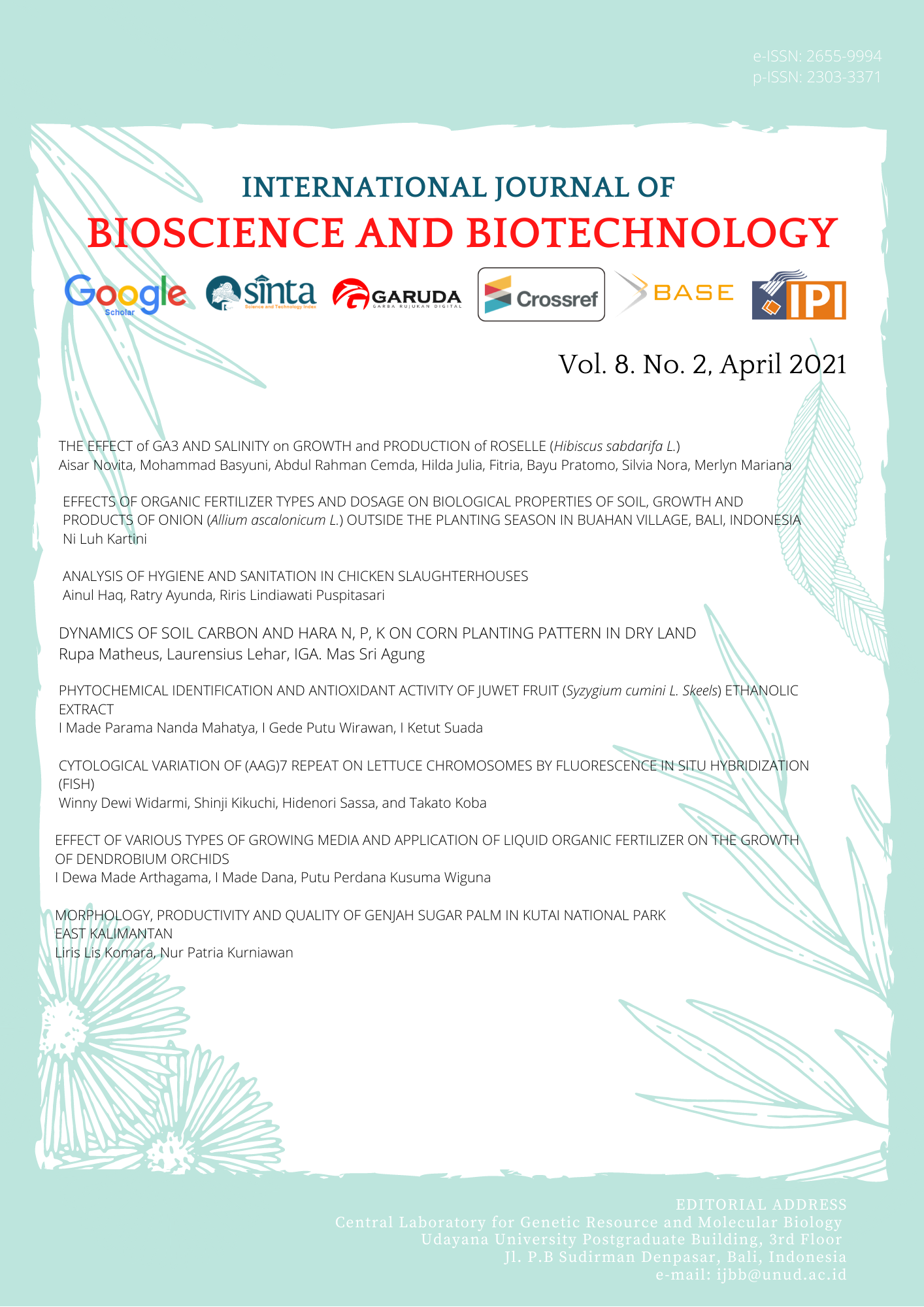DYNAMICS OF SOIL CARBON AND N, P, K NUTRIENTS ON CORN PLANTING PATTERN IN DRY LAND
Abstract
A study was conducted during two planting seasons, namely planting season 1 (PS-1) 2017/2018 and (PS-2): 2018/2019, in Oelnasi Village, Central Kupang sub-district, Kupang District, East Nusa Tenggara, Indonesia. This study aimed to evaluate the rotation pattern of maize with legumes ground covers towards the dynamics of soil carbon and nutrients N, P, K during the two growing seasons in a dryland farming system. The experiment was designed using a randomized block design with 3 (three) treatments replicated five times. The treatments evaluated were: crop rotation patterns consisting of: without rotation (farmer practice) and rotation pattern with Phaseolus lunatus; rotation pattern with Mucuna pruriens. Legume crops planted after harvesting the food crop and allowed to grow during the dry season. Approaching the rainy season, the biomass of the legume crop is returned to the land by immersing them it together with soil cultivation. Chemical fertilizers is given as an independent variables with a dose of 150 kg/ha of Urea; 100 kg/ha of SP36 and 100 kg/ha of KCL. The results showed that the rotation pattern of Mucuna pruriens significantly increased the soil organic C content by 50.56% and legume Phaseolus lunatus by 37.64% to PS-2. The rotation pattern of the legume covers / covered crop also significantly increased the efficiency of agronomic nutrients (N, P, and K nutrients) and maize yields during the two growing seasons. On the other hand, the farmer pattern (without rotation) showed a decrease in soil carbon to PS-2 which of course affect the efficiency of nutrient absorption.






